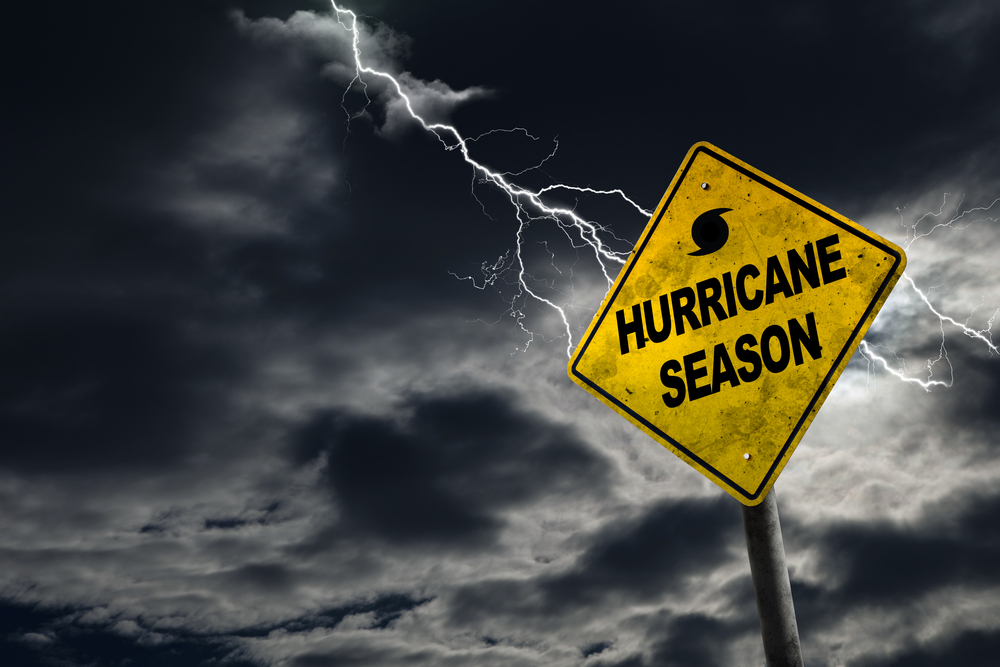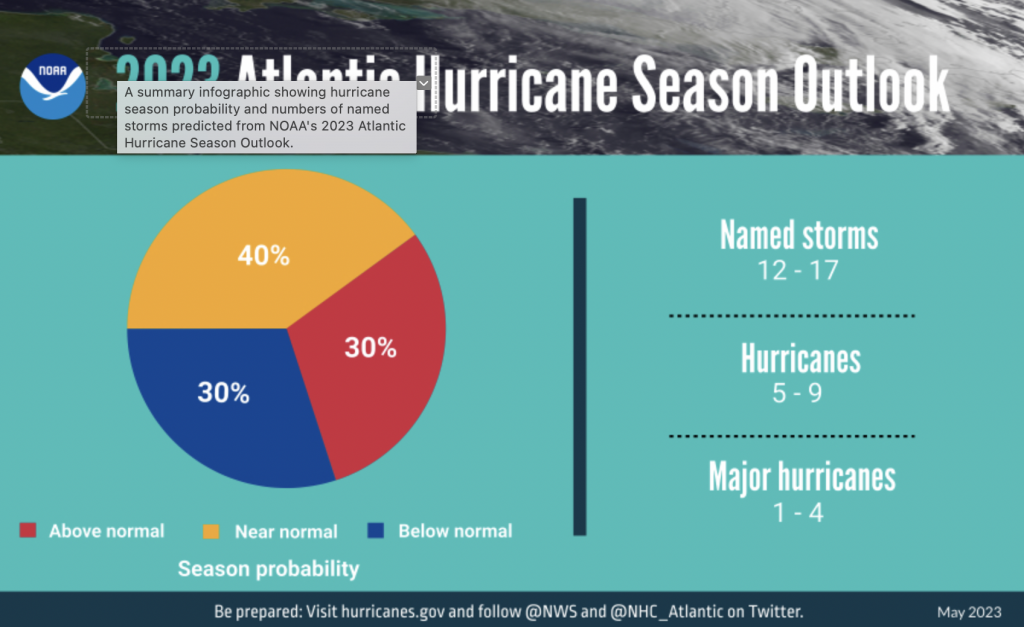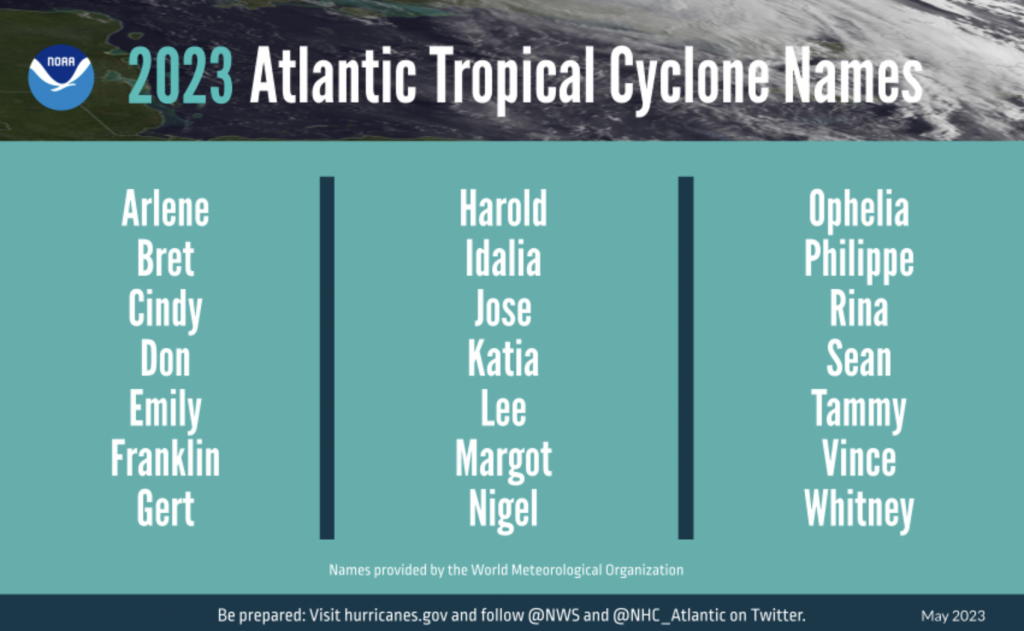US Weather Agency Predicts ‘Near-Normal’ 2023 Atlantic Hurricane Season
by Karen Rollins Jun 5, 2023

The 2023 North Atlantic hurricane season is expected to be near-normal, with between 12 to 17 named storms, according to the US National Oceanic and Atmospheric Administration (NOAA).
In a press release, NOAA said data for the season, which lasts from 1 June to 30 November, shows there is a 40% chance of it being near-normal, a 30% chance of above-normal and a 30% chance of below-normal.
NOAA’s forecast of 12 to 17 storms (winds of 39 mph or higher) includes five to nine which could become hurricanes (winds of 74 mph or higher), including one to four major hurricanes (category 3, 4 or 5; with winds of 111 mph or higher).

NOAA added that this hurricane season is expected to be “less active than recent years, due to competing factors — some that suppress storm development and some that fuel it.”
After three hurricane seasons with La Nina present, El Nino is expected to develop in the summer months, which tends to suppress Atlantic Hurricane activity. But warmer-than-normal sea surface temperatures in the tropical Atlantic Ocean and Caribbean Sea could increase cyclone activity.

NOAA Administrator Rick Spinrad stated: “With a changing climate, the data and expertise NOAA provides to emergency managers and partners to support decision-making before, during and after a hurricane has never been more crucial.
“To that end, this year we are operationalising a new hurricane forecast model and extending the tropical cyclone outlook graphic from five to seven days, which will provide emergency managers and communities with more time to prepare for storms.”
NOAA’s Climate Prediction Center will update the 2023 Atlantic seasonal outlook in early August, just before the historical peak of the season.
Today (June 1st) is also the official start to the North Atlantic hurricane season. Below is a list of storm names for the 2023 Season in the North Atlantic Basin.
— National Hurricane Center (@NHC_Atlantic) June 1, 2023
Visit https://t.co/tW4KeGe9uJ for the latest. pic.twitter.com/GZpxB2yLBq
Source: NOAA.gov








